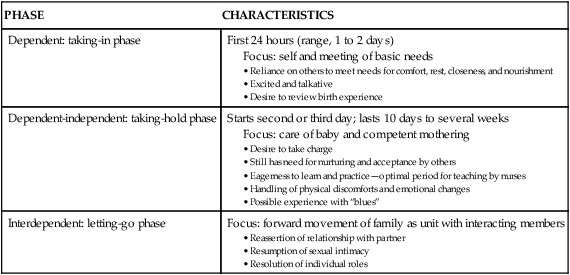Phases of Maternal Role Attainment > Maternal & Newborn
Exam Review
Factors affecting maternal role attainment
Total Questions : 5
Showing 5 questions, Sign in for moreA nurse is teaching a group of pregnant women about the factors that can affect their maternal role attainment. Which of the following statements by one of the participants indicates a need for further teaching?
Explanation
The correct answer is choice C. “My income level can determine how well I perform my maternal duties.” This statement indicates a need for further teaching because it implies that the woman’s financial status is the only factor that affects her maternal role attainment.Maternal role attainment is a complex process that involves many factors, such as age, culture, gender, support system, self-esteem, and health status.
Choice A is wrong because age can influence how a woman feels about being a mother.Younger mothers may face more challenges and stress than older mothers, while older mothers may have more health risks and less energy than younger mothers.
Choice B is wrong because the baby’s gender can affect how a woman bonds with him or her.
Some women may have a preference for a certain gender or feel more comfortable with one gender over another.Gender may also influence the expectations and roles that the woman and her partner have for the child.
Choice D is wrong because the cultural background can shape the woman’s expectations of motherhood.
Different cultures may have different beliefs, values, practices, and norms regarding pregnancy, childbirth, and parenting.The woman may face conflicts or challenges if her culture differs from the dominant culture or her partner’s culture.
A nurse is assessing a client who gave birth 24 hours ago.
The client is talking about her labor experience and asking for assistance with breastfeeding.
The nurse recognizes that the client is in which phase of maternal role attainment?
Explanation
The correct answer is choice C. Interdependent.According to Mercer’s theory of maternal role attainment, the interdependent phase is when the mother has integrated the maternal role into her other roles and responsibilities and has established a reciprocal relationship with her baby.She also seeks social support and validation from others.
Choice A.Dependent is wrong because it refers to the first phase of maternal role attainment, when the mother is focused on her own needs and recovery after childbirth and relies on others for guidance and assistance.
Choice B.Dependent-independent is wrong because it refers to the second phase of maternal role attainment, when the mother begins to take charge of her own and her baby’s care and learns the skills and behaviors of mothering.

Choice D.Independent is wrong because it refers to the fourth phase of maternal role attainment, when the mother has achieved a sense of harmony and confidence in her maternal role and has developed a unique style of mothering.
A nurse is caring for a client who has a newborn with Down syndrome.
The client is reluctant to hold or feed the baby and expresses feelings of guilt and sadness.
The nurse should identify that the client is at risk for impaired maternal role attainment due to which factor?
Explanation

The correct answer is A. Infant characteristics. The nurse should identify that the client is at risk for impaired maternal role attainment due to the infant’s characteristics, such as having Down syndrome, which can affect the mother’s bonding and attachment process. The mother may experience feelings of guilt, sadness, disappointment, or rejection toward the infant.
B. Social support is incorrect. The nurse should identify that the client’s social support is a protective factor for maternal role attainment, not a risk factor. The client may benefit from the emotional and practical support of her family, friends, health care providers, or support groups.
C. Maternal characteristics is incorrect. The nurse should identify that the client’s maternal characteristics are not a risk factor for impaired maternal role attainment in this scenario. Maternal characteristics that can affect maternal role attainment include age, parity, education, socioeconomic status, and mental health. There is no indication that the client has any of these factors that would interfere with her ability to bond with her baby.
D. Cultural norms is incorrect. The nurse should identify that the client’s cultural norms are not a risk factor for impaired maternal role attainment in this scenario. Cultural norms can affect maternal role attainment by influencing the mother’s expectations, beliefs, values, and practices regarding motherhood and childrearing. There is no indication that the client has any cultural barriers that would prevent her from bonding with her baby.
A nurse is planning an antenatal education program for a group of pregnant women from different cultural backgrounds.
The nurse should consider which of the following factors when designing the program to promote maternal role attainment?
Explanation
The correct answer is choice B. The program should be flexible to accommodate individual needs and preferences.This is because antenatal education aims to help prospective parents prepare for childbirth and parenthood, and different cultural backgrounds may have different beliefs, values and expectations about these topics.
A flexible program can tailor the content and delivery to suit the diverse needs of the participants and promote maternal role attainment.
Choice A is wrong because a standardized program may not address the specific concerns or questions of the pregnant women from different cultural backgrounds.It may also ignore the cultural diversity and sensitivity that is needed to provide effective antenatal education.
Choice C is wrong because having a single instructor may limit the perspectives and expertise that can be shared with the participants.A team of instructors with different backgrounds and specialties may be more beneficial and engaging for the pregnant women.
Choice D is wrong because focusing on the medical aspects of pregnancy and childbirth may neglect the emotional, social and psychological aspects that are also important for maternal role attainment.Antenatal education should cover a range of topics that are relevant and meaningful for the participants.
A nurse is evaluating the parental-infant bonding of a couple who have a newborn.
Which of the following behaviors by the parents indicates optimal bonding? (Select all that apply.)
Explanation
The correct answer is choices A, B and C. These behaviors indicate optimal bonding because they show that the parents are attentive, affectionate and communicative with their baby.
They also demonstrate that the parents recognize the baby as a unique individual with needs and preferences.
Choice D is wrong because expressing concern about the baby’s weight and appearance may indicate anxiety, insecurity or dissatisfaction with the baby.
These feelings may interfere with bonding and attachment.
Choice E is wrong because allowing other family members to feed and change the baby may indicate detachment, indifference or resentment towards the baby.
These feelings may also hinder bonding and attachment.
The normal range for newborn weight is 2.5 to 4 kg (5.5 to 8.8 lb) and for newborn length is 45 to 55 cm (18 to 22 in).
Sign Up or Login to view all the 5 Questions on this Exam
Join over 100,000+ nursing students using Nursingprepexams’s science-backend flashcards, practice tests and expert solutions to improve their grades and reach their goals.
Sign Up Now

